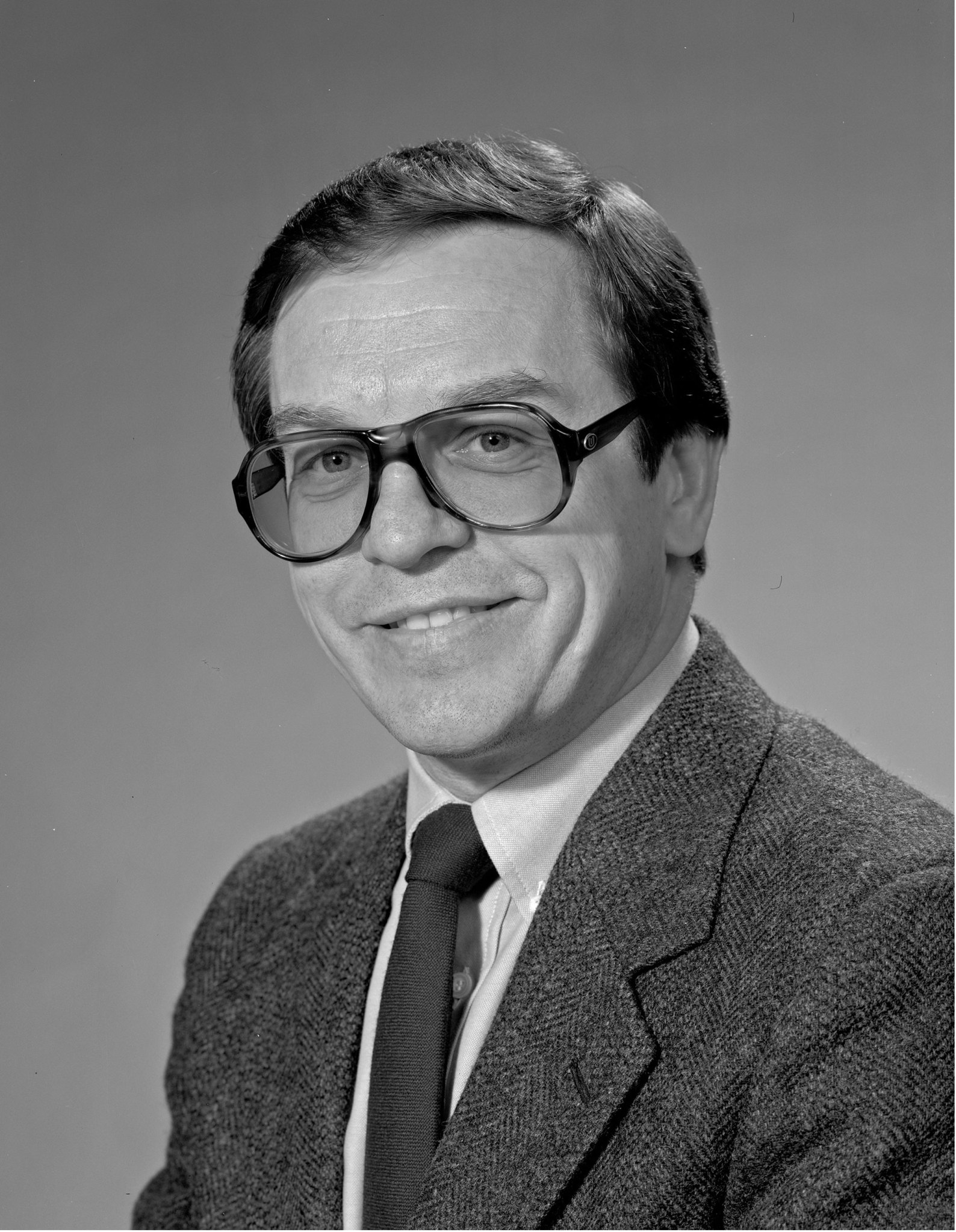Dr. M. Patrick McCormick
Dr. M. Patrick McCormick (1940 – ) is recognized worldwide as a leader in satellite remote sensing. His research has led to many discoveries and contributions in the field of atmospheric sciences in the areas of aerosols, clouds, and ozone, and their impact on the Earth’s climate and atmospheric chemistry.
McCormick was born in Canonsburg, Pennsylvania, and earned his master of science and doctoral degrees in physics at The College of William & Mary in 1964 and 1967, respectively. For his dissertation topic, he built one of the first light detection and ranging (lidar) systems in the world. He started his career at the NASA Langley Research Center in 1967 as a research scientist in the Gas Parameters Measurement Section of the Instrument Research Division. In 1970, McCormick became Head of the Photo-Electronic Instrumentation Section, where he continued to build multi-wavelength lidars and other atmospheric measurement systems. In 1975, he was selected to head the newly formed Aerosol Research Branch, a position he held until his retirement in 1996.
Because of his exemplary leadership, NASA Langley Research Center is now an international center of excellence in lidar and solar occultation remote sensing of the atmosphere. During his 30-year career at NASA Langley Research Center, McCormick created and fostered a research team that made pivotal discoveries on how clouds, suspended atmospheric particles (aerosols) and ozone influence atmospheric chemistry and the Earth’s climate system. His first space-borne experiment was called SAM (Stratospheric Aerosol Measurement) that he and a colleague at the University of Wyoming developed and flew during the Apollo-Soyuz Test Project in 1975. This experiment was a proof-of-concept instrument that later evolved into the SAM II mission and a series of very successful Stratospheric Aerosol and Gas Experiments (SAGE I, SAGE II, SAGE III/Meteor 3M, SAGE III/International Space Station) that McCormick led –and continues to lead– as Principal Investigator (PI).
In parallel with those efforts, he developed a ground-based lidar system that operated for several decades, beginning in the mid-1970s, to monitor the impact of volcanic eruptions on our atmosphere and climate. That 48-inch system, one of the largest in the world, was moved to Hampton University in 2004, where it continues making atmospheric measurements. He was one of the first to integrate and deploy an airborne atmospheric lidar, which along with the SAM II and SAGE satellite data provided new insights into global stratospheric dynamics following the eruptions of volcanoes El Chichon in Mexico (1983) and Mt. Pinatubo in the Philippines (1991).
As PI for the 10-day Space Shuttle Lidar In-space Technology Experiment (LITE) mission in 1994, McCormick led a team that demonstrated the value and viability of a long-term spaceborne lidar. The Cloud-Aerosol Lidar and Infrared Pathfinder Satellite Observations (CALIPSO) satellite mission is a direct outgrowth from the LITE experience; and its 10-year data record is transforming our understanding of cloud systems and aerosol sources and transport over the globe. As a Co-PI for CALIPSO, his scientific insight not only helped shape this mission’s objectives, but also helped formulate the mission’s partnership with the French Space Agency, CNES.
McCormick is a Fellow of the American Geophysical Union and the American Meteorological Society. He is the founder of the International Coordination Group on Laser Atmospheric Studies (ICLAS), and has served on several National Research Council (NRC) and NASA committees.
He has published over 430 papers, journal articles, NASA publications and books, including 270 refereed journal publications. One example of his research is his characterization and naming of Polar Stratospheric Clouds, or PSCs, found in the dark polar winter nights that are a necessary chemical component for the creation of the Antarctic ozone hole each year. Another is the SAGE ozone data record that provides a valuable and stable reference for understanding how chlorofluorocarbon (CFC) compounds affect ozone loss over the globe. Findings from these different measurement programs have significantly advanced our knowledge of the Earth System.
He earned numerous highly prestigious professional awards during his NASA career, including:
• Arthur S. Flemming Award for One of the Ten Outstanding Young People in Federal Service (1979)
• NASA Exceptional Scientific Achievement Medal (1981)
• Langley H.J.E. Reid Award as co-author for the most outstanding paper entitled “Polar Stratospheric Clouds and the Antarctic Ozone Hole” (1990)
• Jule G. Charney Award for outstanding contributions to satellite sensing and elucidation of the nature of polar stratospheric clouds, American Meteorological Society (1991)
• The International Radiation Commission’s International Coordination Group on Laser Atmospheric Studies highest honor for long-term and outstanding contributions to lidar research (1991)
• NASA Outstanding Leadership Medal “for outstanding leadership in conceiving, developing, and implementing spaceborne remote sensors that have advanced scientific understanding of processes in the atmosphere” (1996)
• William T. Pecora Award, NASA and Department of the Interior, “in recognition of his outstanding contributions to the pioneering advancements of both active and passive remote sensing of the Earth’s atmosphere from space” (1996)
• NOAA Environmental Research Laboratories Outstanding Paper Award, “Role of Aerosol Variations in Anthropogenic Ozone Depletion in Polar Regions” (1998)
• NASA Distinguished Public Service Medal, “for your outstanding contributions to remote sensing of aerosols and trace gases in the Earth’s atmosphere and commitment to development of a diverse scientific labor force” (2000)
• The Remote Sensing Lecturer Award, American Meteorological Society, “for pioneering the development of lidar and other remote sensing techniques to further scientific understanding of the atmosphere” (2000)
• Virginia’s Outstanding Scientist Award (2007)
• Washington and Jefferson College Alumni Achievement Award (2008)
After his retirement from NASA, Dr. McCormick joined the staff of Hampton University as a professor of physics, in a graduate track of atmospheric science, and co-director of the Hampton University Center for Atmospheric Sciences. Subsequently, a Graduate Department of Atmospheric and Planetary Science was created where he is a professor.
Dr. McCormick and his wife, Judy Moyer McCormick, live in Poquoson, Virginia. They have a daughter, Lynn and a son, Michael.



























